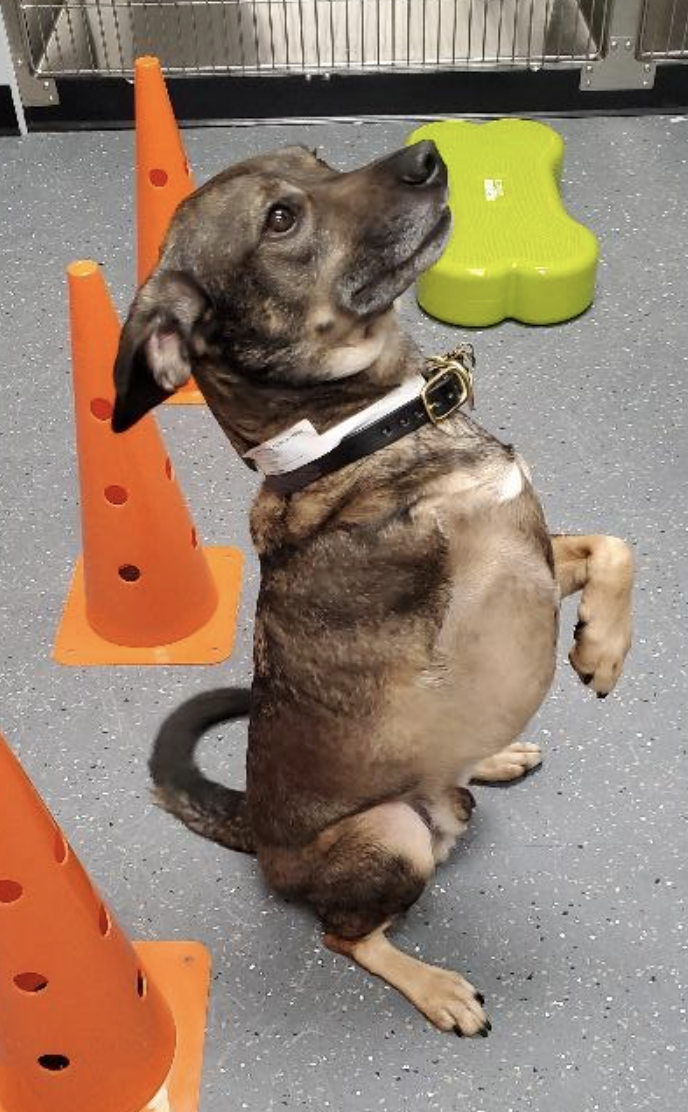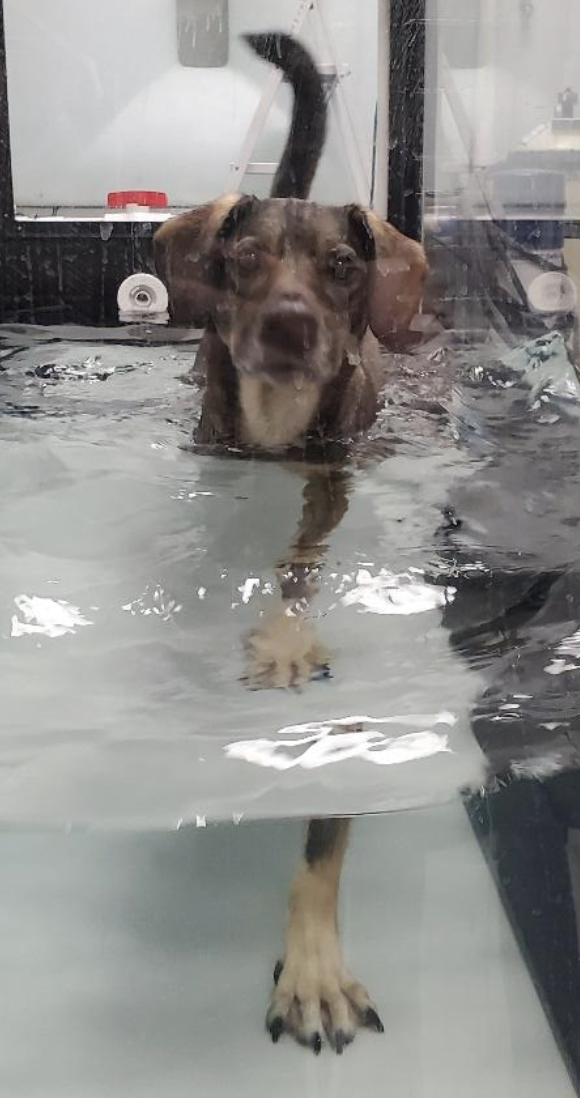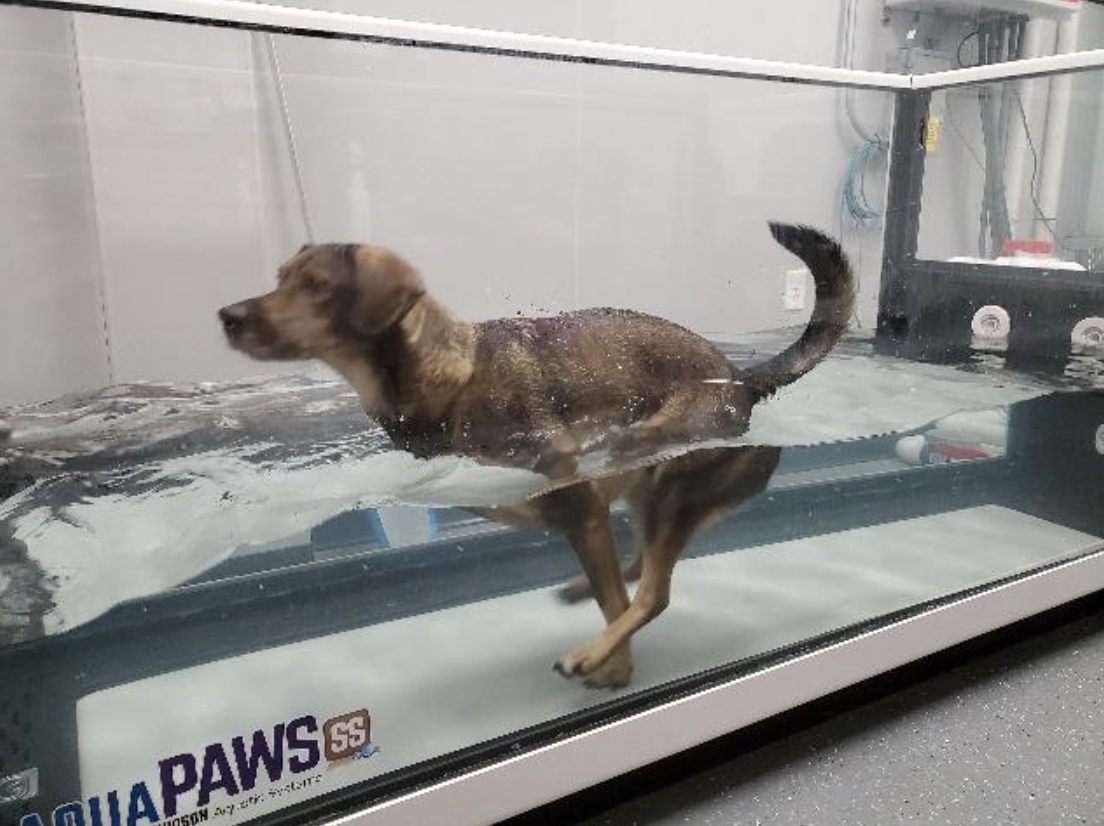You may have heard before that canine amputees do well post-amputation and there’s nothing further that needs to be done. However, if you take a moment to think about how the compensation of the remaining limbs may affect their bodies as a whole you may just change your mind.

A dog can become three-legged for various reasons, including birth defects, traumatic events, infection, or a dreaded cancer diagnosis. An amputation can also occur at any age and in any physique. Regardless of how your dog lost a limb or how old they were, it is important to think about how they will do afterward. While, yes, dogs will ultimately figure out how to function with three limbs, there are ways we can help improve their quality of life.
A four-legged dog supports approximately 60% of their weight on their front legs and 40% of their body weight on their rear legs while standing. When a dog loses a limb, those numbers change. A front leg amputation supports approximately 77% of the weight on the remaining front limb and 53% on the rear limbs. A rear limb amputation supports approximately 74% of the weight on the front limbs and 26% on the remaining rear limb.
When in motion, a three-legged dog will experience a change in their gait patterns (walk, trot, etc.) due to an increase in force to the remaining limbs, particularly the front limbs, and the spine. This will result in a change to the spinal alignment where the lumbar spine will round upward while the thoracic (upper portion of spine) and cervical spine (neck) tends to drop or slope downward. An increased force in the remaining limbs will increase the risk of developing arthritis at a much faster rate as compared to their four-legged counterparts. If you have ever wondered where the term “tripod” (or “tripawd”) comes from when referring to three-legged dogs it is due to the change in the alignment of their limbs. The remaining front or rear limb moves toward the midline, or center, of the body for a tripod-like effect. As you can then imagine, if there are changes in the body with the spine and limbs, there will be additional strain on the muscles as well.
Rest assured, there is help available. Rehabilitation with a canine rehabilitation professional will greatly improve the quality of life of our tripawd friends and can start immediately post-amputation. During the immediate healing phase and up to several months after, canines can experience phantom limb pain just as humans do. In conjunction with pain medication, rehabilitation can provide much needed pain relief in the form of cryotherapy, massage therapy, laser therapy, heat therapy, and passive range of motion during the phase when the incision is healing.


Once the incision has completely healed, we then want to focus on increasing flexibility and balance and improving strength in the core muscles and remaining limbs to prevent injuries that can be debilitating in our tripawds. At this point, we can think about Aquatic Therapy in the form of an Underwater Treadmill. This can help build muscle, improve their gait, and aid in weight loss if needed. With an amputation, it is extremely important to maintain their weight a little bit on the thinner side to help reduce additional impact on the remaining joints. The underwater treadmill is also a fantastic tool if a dog already has arthritic changes and exercise is difficult.
Any tripawd at any point in their life can benefit from rehabilitation. This particular article was directed toward our dog owners. However, our feline tripawd friends can also benefit from rehabilitation.
2. Hogy, Sara M., et al. “Kinematic and Kinetic Analysis of Dogs during Trotting after Amputation of a Pelvic Limb.” American Journal of Veterinary Research, vol. 74, no. 9, 2013, pp. 1164–1171, https://doi.org/10.2460/ajvr.74.9.1164.

